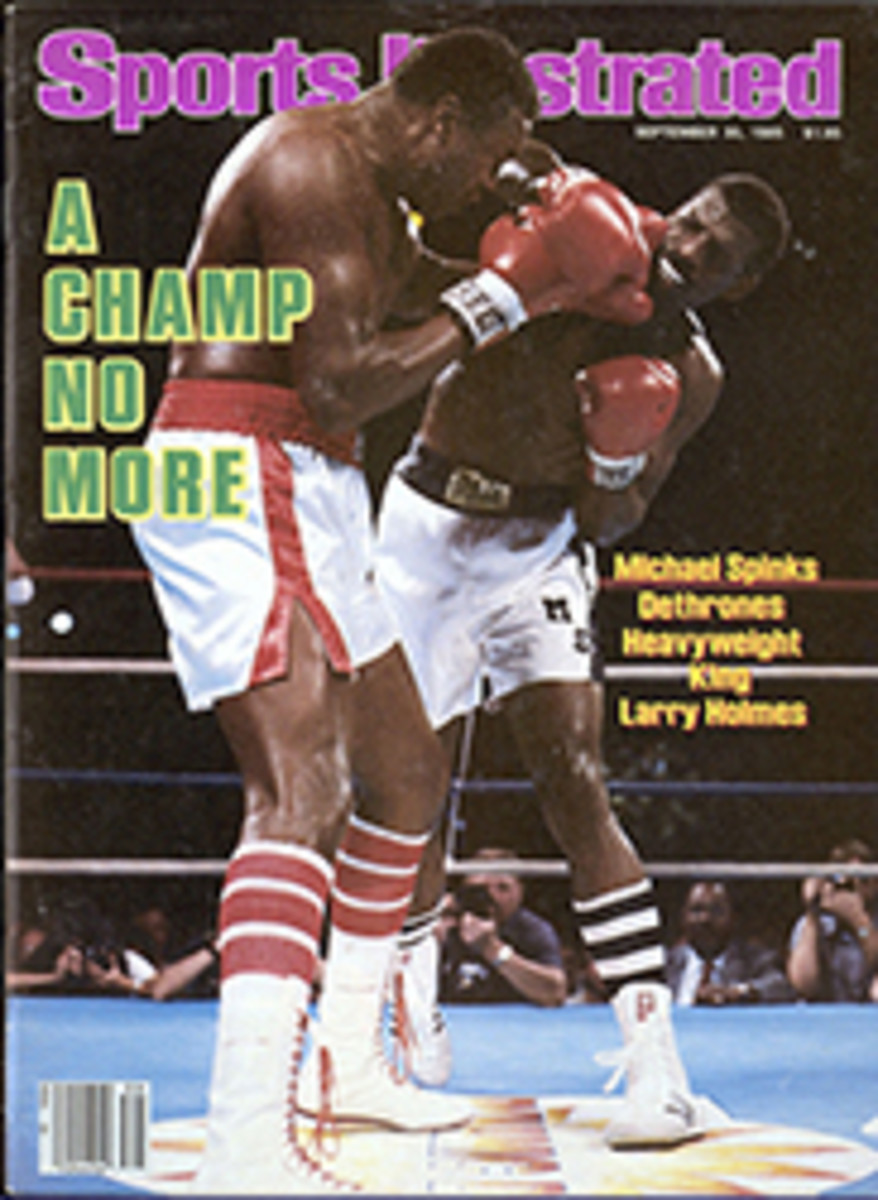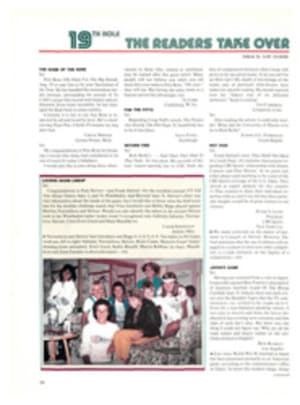
Sideline
A plastic rhinoceros overlooks the 18th tee at the Midway Par III in Myrtle Beach, S.C. On the tee stands the Painter family—Mom, Dad and the two boys, all wearing Day-Glo outfits. Dad nestles his 50¢ golf ball on the green brush mat and thwacks a grounder. "Worm burner!" shouts his beefy son Tim, 20, who's decked out in turquoise shorts and a Hawaiian Tropic T shirt. Dad drops a mulligan, whacks it and is quickly followed by the rest of the family. "Where's my caddie?" bellows Tim as he sets off carrying three ancient rental clubs. Nearby, Calvin Whitehead, a farmer from Valdosta, Ga., practices his putting. "If you can putt on these greens, you can putt on parking lots anywhere," he says.
Welcome to the world of par-3 golf. There are 947 par-3 courses scattered across the American landscape. They offer the young, the old and especially the novice the opportunity to play golf free from fear—fear of being beaned by impatient foursomes in $100 Foot Joys, of offending the country-club dress code by wearing only coconut oil above the waist, of scoring a 20 on every hole.
Par-3s range in quality from Rolls-Royces to Rent-A-Wrecks. There's the Knolls Country Club in Lincoln, Neb., possibly the nation's only par-3 country club (swimming, tennis, dining included). Knolls has an 18-hole course featuring holes 200 yards plus, complete with rolling hills, water hazards and sand traps. Then there is Pipestem, located in West Virginia's Pipestem State Park perched high in the Allegheny Mountains. And the Peter Hay Course at Pebble Beach, Calif., a nine-hole shortie that offers players a gentle tune-up before they attack the great course itself.
Queen of them all is the beautifully buffed little layout at Augusta National On the Wednesday preceding the Masters, a par-3 tournament is held there, and it is far and away the world's most prestigious iron-only event. Indeed, the short game gets more international ink on that one day than it does all year.
At the other end of the spectrum are the low-rent operations, like Golf Land in Vernon, Conn., which has rubber mats for tees, holes that average 55 yards and—believe it or not—two holes on every green. Players are asked to move the flag from one cup to the other to reduce wear and tear, and the scorecard admonishes, in bold lettering NO HIGH HEELS.
For most golfers, par-3 courses fall into a kind of limbo—not regulation golf, but not quite putt-putt either. For the serious golfer, playing a honky-tonk par-3 is a bit like a food critic eating a Twinkie: There's a naughty pleasure in it.
But par-3s are not necessarily a lower form of golf. A top-quality short course (rare as it is) can offer seasoned golfers a chance to practice their wedge and pitch-and-run shots. Arnold Palmer and Billy Casper endorse the abbreviated links. Says Casper, "Par-3 can be great practice, especially since par-3s are probably the hardest holes in regulation golf." A surprising number of pros echo that sentiment. "There's no room for error on a par-3 tee shot," argues Casper, "whereas on a par-4 or- 5, you've got time to recover."
Whatever their value may be to the Palmers and Caspers of the world, for the below-average hacker par-3 courses are important for the simple reason that they are there. There is a shortage of regulation public golf courses in the U.S., especially near metropolitan areas. "About 15 million Americans play golf regularly, but perhaps 50 million would like to," says Geoffrey Cornish, a very busy golf architect, who has designed 187 courses, including 14 par-3s.
An average regulation course, with amenities, costs about $2.5 million to build after the land—at least 150 acres—has been acquired. Seventy-five percent of the courses now under construction or on the drawing board are parts of real estate deals in which developers sell housing lots along the fairways.
That's fine and dandy for a luxurious, 7,000-yard, 18-hole course that ambles over rolling acres of real estate, but what about a 2,000-yard par-3? It's way too small to accommodate condos along the fairways. Unfortunately, a lot of these courses are sitting on land that is perfect for putting condos in the fairway—which, of course, wipes out the course. Take the delightful Neipsic Golf Club in Glastonbury, Conn. This 18-hole par-3 course had grass tees, a 206-yard hole, bunkers, water hazards and manicured greens. Now the surveyors are deciding where in the fairways the condos will go. Neipsic will soon make its final pin placement—into the back of a pickup truck.
Another jewel of a par-3 was the Adventure Inn Golf Club course in Hilton Head, S.C., where an old man used to lure the alligators out of the lagoons with Tom's peanut butter cheese crackers and then go down to the edge and retrieve golf balls. He would sit on the pro shop porch on lazy afternoons, drinking Orange Crush and selling water balls to tourists. The Hilton Head course was bulldozed in the mid-'70s—greens, 'gators, lagoons, the works—and covered with condos.
One bright light for short-course addicts has appeared on the horizon in the form of the so-called executive course, a first cousin to the par-3. The 18-hole executive usually contains eight or more par-3 holes, with the rest being par-4s. This yields a course 3,500 to 4,500 yards long with a par of 60 to 64. The executive is especially suited to senior golfers whose short game surpasses their long game. It's also great for any golfer in a hurry. Executive courses can be built on as little as 50 acres; there are now 810 executive courses, and the number is inching upward.
And which is the country's finest par-3? Blue Rock, on Cape Cod in South Yarmouth, Mass., gets a lot of votes. It has holes as long as 247 yards, and most golfers can use all their clubs, including the driver.
Golfers can certainly improve their game—and their spirits—on such fine little courses. But when a serious golfer feels like sinning, there's nothing like a low-rent course. Take Jones Beach Pitch 'N' Putt on Long Island, just a wedge shot from New York's most popular public beach. On a recent Sunday, teenagers played Frisbee along the 17th fairway while a foursome approached the first tee carrying a ghetto blaster blaring rock 'n' roll, and some high school kids took practice swings to the beat.
About 400 people golf there every summer Sunday. To speed up play, the rules include a maximum of five fairway strokes per hole, but this rule is rarely obeyed. One young Jones Beach golfer summed up the difference between the regulation game and par-3. "Regulation is more serious," he said. "You throw your clubs farther."
ILLUSTRATION
ED RENFRO
Richard Zacks is the home-video columnist for the New York "Daily News."

